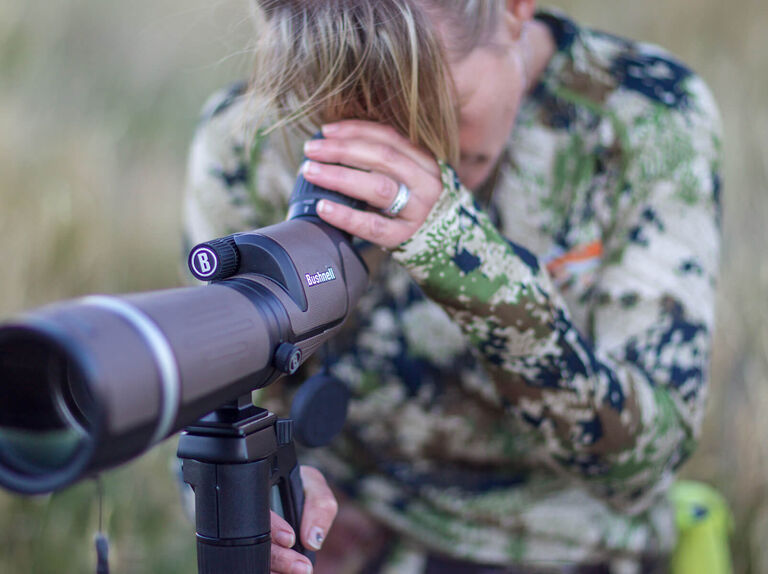
Spotting scopes are great tools if you enjoy various outdoor activities. Therefore, you need to get a spotting scope if you intend to find an optic device that is easy to transport and has excellent magnification capability. A long range spotting scope is good for many outdoor activities and is considered to be ideal compared to many other optical devices.
The good news is that you can find them in a variety of sizes, though you may require a tripod to use them so that you can get a stable platform for best visual results. With outstanding visual results and high power magnification, many people are ready to purchase one for their outdoor activities. This post discusses how to select the best long range spotting scope.
Choosing the right scope
Choosing the optic device for outdoor activities doesn’t have to be hard. A spotting scope is always a great choice compared to other optic devices like binoculars. You see when it comes to target shooting, this can sometimes involve shooting at designated and non-living targets like paper or cardboard targets and even clay pigeons. This activity is usually for fun or it can give you valuable practice time with some weapons you can use in a hunting or tactical setting.
What makes target shooting unique compared to traditional hunting is that it’s usually done from a stationary position. As a result, this can be a prime activity for utilizing a tripod with a spotting scope.
A spotting scope tends to have the magnification range. Therefore, if you want to see each detail possible, perhaps you need to get a spotting scope. However, make sure that you also get a tripod to use with a spotting scope.
On the other hand, hunting is an outdoor activity that comes in various forms. Therefore, depending on the type of hunting activity, it also makes sense to use a spotting scope. This is because spotting scopes have a good visual, especially when it comes to long distances. Even better, they are also great when you decide to take on a stationary position.
Also, when it involves hunting large game, spotting scopes can be excellent for setting up and taking a long shot. In other words, you need to get the right spotting scope if you decide to hunt large game.
How to use a spotting scope properly
It needs some skills set to use a spotting scope as it gives specific challenges. Keep in mind that purchasing a spotting scope doesn’t necessarily mean you need to get larger objective lenses. But this can be important if you want to use it in poor light to watch birds. Shooters usually use it in daylight conditions.
While bigger spotting scopes can be affected by the wind, you can still use them by seeking shelter behind a landscape feature or vehicle. In this way, you can reduce the effects of the wind on yourself and prevent carrying straps or loose cases flapping around the spotting scope.
A high-quality tripod is also important to the setup. Therefore, you should consider getting carbon tripods that tend to be light to transport, especially when covering long distances on foot.
Choosing a scope with the right eye relief can also be crucial. In this way, you can ensure that the spotting scope is steady and in good position. So take the time to feel comfortable without straining or bending the back to maintain position. It’s worth noting that continuous strain may add to muscle fatigue and loss of attention to the target. And, you can decide to sit down just behind the scope on the ground to get less buffeting.
If you decide to have long range shooting, it’s a good idea to stand closely in-line behind as well as above the person shooting so that they can see the flight path of the bullet. But if the spotting scope view is slightly displaced to a side, then there can be a lateral miss on your target.
There may also be a backstop just behind it, especially where an impact takes place. Unfortunately, there is a good chance that you can misinterpret this with the over the top miss. So you need to think of the bullet’s arc that can curve towards the ground when there is an increase in range.
Here is the deal, when aiming your spotting scope, make sure that you have a target. This target needs to be about one third of the view because a lot of what you want to see happens above the direct line of view.
After your focus on the potential target, then you can take the focus back a bit toward you. This needs to be at least a point half to two thirds of the distance of the flight from the muzzle of your rifle. It can be a great experience to watch a bullet hit precisely on a backstop.
Aside from this, you also need to relax your vision and gaze into the upper two thirds of the view’s field. This is where you may watch the trace while the bullet flies. Remember that flight time can be longer than the impact. Therefore, this can offer you a split-second advance alert of the flight path and where it’s likely to hit. However, you should be well-hydrated because there will be less blinking so that you can have a better vision.
After a couple of shots, then you can know the timing between the sound of the shot and viewing the trace. While moving to longer ranges, you may see the trace and its impact time that tends to increase before hearing any noise from the striking potential target.
There is usually a banana-like shape associated with the trace of the shot that deliberately gets into the lateral wind and it moves back for a perfect hit on the steel. This is a good sight that you can capture on your smartphone so that you can get engaging footage.